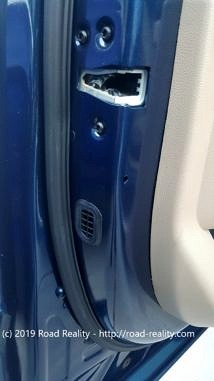
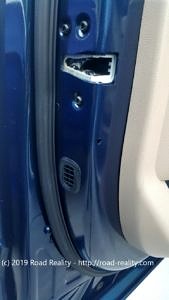 Ford’s F-150 continues to sell in record numbers, and its F-Series (including F-150 and Super Duty trucks) perennially beats the competition in that regard. But with the aluminum body came one big issue: freezing door latches. Ever since the 2014-2015 winter, the 2015+ F-150 and 2017+ Super Duty has frustrated owners with door latches that either won’t allow the door to open, or even worse, won’t latch closed. The problem presents itself typically after the vehicle is washed or rain/snow falls on it. Ford has tried and failed to reliably fix it, and so far this is the best remedy I’ve found. Read on for how I have [hopefully] fixed this issue with my truck. If you want to use the same lubricant I did, buy PB Blaster on Amazon (Affiliate link).
Ford’s F-150 continues to sell in record numbers, and its F-Series (including F-150 and Super Duty trucks) perennially beats the competition in that regard. But with the aluminum body came one big issue: freezing door latches. Ever since the 2014-2015 winter, the 2015+ F-150 and 2017+ Super Duty has frustrated owners with door latches that either won’t allow the door to open, or even worse, won’t latch closed. The problem presents itself typically after the vehicle is washed or rain/snow falls on it. Ford has tried and failed to reliably fix it, and so far this is the best remedy I’ve found. Read on for how I have [hopefully] fixed this issue with my truck. If you want to use the same lubricant I did, buy PB Blaster on Amazon (Affiliate link).
NOTE: If someone in or near the Washington, D.C. Metro area wants to have me do the DIY fix on your truck, since I don’t have mine, and doesn’t mind it being filmed, let me know! I’d love to film the process and put it on my YouTube Channel.
In January of 2017, my truck’s driver’s door would not latch. It opened just fine, but just bounced off the latch whenever I tried to close it. My temporary fix was to push down the lock and close the door, which worked. After driving to work, the door functioned properly. A quick Google search later and I found threads on F-150 forums about similar problems plaguing owners in colder areas of the country. I was not alone.
Ford released a few TSBs (technical service bulletins), the first of which was performed on my truck after I took a video on my phone and informed my dealer. It involved a new vapor barrier and some other steps to try and prevent water from getting into the latch mechanisms and freezing. Since that time, I have kept up with the issue on F150forum.com, hoping I would never experience it again. The mere thought of the doors opening with my children in the truck (safely belted into their child seats of course, but still) is scary, to say the least. It was in one thread on the forum that I found the fix I am about to outline.
Fast forward to this morning, and my driver’s side rear door failed. I washed the car yesterday, dried it thoroughly, and even drove around for a while running errands. Today, at a truck-indicated 27 degrees Fahrenheit, it opened just fine, but bounced against the latch when I tried to close it. I pushed down the latch, as I’d done before, and the door shut and stayed closed. Trying both inside and outside door handles, as well as pulling the lock bolt up, did nothing. The door wasn’t opening. I tried the other doors, and they were all fine. This time, just like in 2017, after driving to work all four doors functioned properly. When I got home, I performed the fix. Let’s hope it works as well for me as for the many members of F150forum.com who have applied it to their trucks!
A quick note: This fix is NOT approved by Ford, nor did it come from their engineers. It’s a home-grown fix I found on F150Forum.com, and detailed in this post so it may help others. It has worked for the majority of owners who have done it, and there are some other methods which may or may not have the same efficacy. I hope this method works for me as well as them, and I’ll report back on whether or not it does. I’ve also read that it affects owners of 2017+ F-Series Super Duty trucks (F-250 on up), since Ford uses the same aluminum cab as on the F-150.
Step 1: Remove Plugs
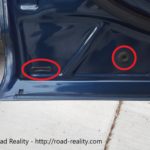
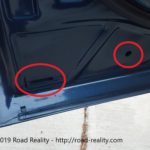

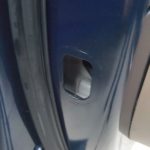
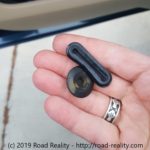
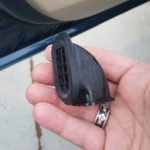 Start by removing the grid-covered elbow vent beneath the exposed part of the door latch. Rotate the elbow vent 180 degrees so the elbow faces upward instead of down, and push it back into place. Be careful not to push on the grid, as it will crack. Remove and store two more plugs from the bottom of the front doors. Note that the rear doors only feature the horizontal plugs.
Start by removing the grid-covered elbow vent beneath the exposed part of the door latch. Rotate the elbow vent 180 degrees so the elbow faces upward instead of down, and push it back into place. Be careful not to push on the grid, as it will crack. Remove and store two more plugs from the bottom of the front doors. Note that the rear doors only feature the horizontal plugs.
By removing the plugs at the bottom of each door, you’re increasing the amount of air flow through the door. According to members of the forum, reversing the elbow vent also changes the air flow and allows less water into the door.
Step 2: Spray the Lubricant

I used PB Blaster, as in the picture, to lubricate the latch mechanisms. It’s hygrophobic, so it repels water, and spreads out over a few days to become a film on the metal pieces of the latch. This should keep water from freezing inside the mechanism and causing the issue. Attach the nozzle to the bottle, shake well, and insert the nozzle into the latch. Coat as much of it as you can, and at many angles, to ensure it coats as much of the mechanism as possible.
Update 2/28/2019: A suggestion from a forum member on F150forum.com was to loosen the three torx bolts which hold the latch in place, in order to get the lubricant in better.
Step 3: Work the Locks
In order to speed up the process and ensure better coverage, I worked the locks several times. I’m not sure if anyone else did this, but I thought it would be a good idea. I used the key fob to lock and unlock the doors several times, and also worked the handles.
Now, you should be all done! Let me know if this fix worked for you!
Update 2/28/2019: I had the freezing latch problem reoccur since posting this. I took the truck to my local Ford dealer and they performed TSB (technical service bulletin) 18N03 on my truck’s doors. This includes taking each door apart, drying it out thoroughly, and applying sealant to the openings. Since then, I have not had this issue. I still believe that removing the plugs and lubricating the latch mechanism will work for the majority of F-150 owners who have this problem. I skipped the drying out part since I did not want to take my doors apart, so it’s not listed in this article, and may have prevented the TSB from being necessary.
by John Suit

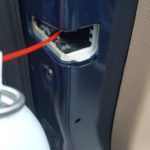



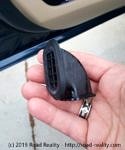

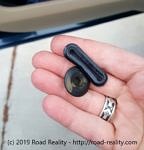




Great work John…. I posted a link to this on our and the F-SD forums….. Lenny (AKA AZPLAT)
A lot depends upon the driving history and age of the driver too – at times, they also find owners of red colored cars to be dangerous than the ones who drive white/silver cars, and there are many other factors – at times, it can be really tricky
f150 ford specs